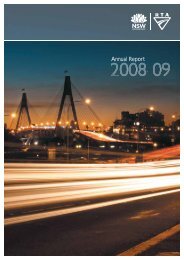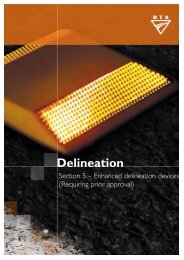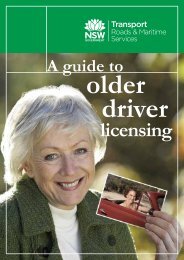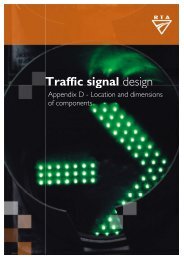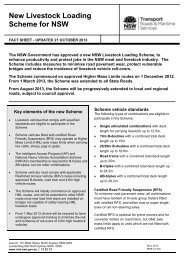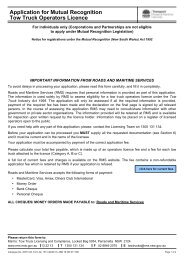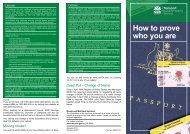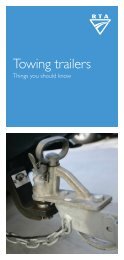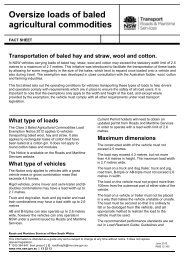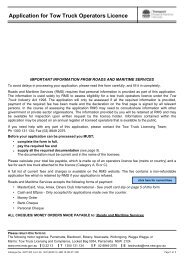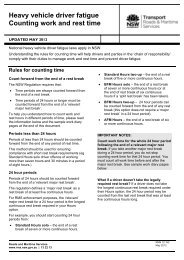Hazard perception handbook - RTA
Hazard perception handbook - RTA
Hazard perception handbook - RTA
Create successful ePaper yourself
Turn your PDF publications into a flip-book with our unique Google optimized e-Paper software.
6<br />
66<br />
Map out a circular route through a nearby built-up area that will take you about 5–10<br />
minutes to complete. Include traffic lights, Stop signs and areas where you are likely<br />
to come across other road users such as pedestrians.<br />
Ask your experienced assistant to drive the circular route, with you travelling in the<br />
passenger seat. Scan the road as though you are driving. As your assistant drives the<br />
circular route, ask them to tell you where they are looking, what they are looking<br />
at and what they consider to be hazards. Questions like ‘What are you seeing?’ and<br />
‘What are you going to do now?’ might be appropriate.<br />
This technique is called commentary driving and is used by driver trainers and some<br />
licence examiners to find out where a driver is looking, what hazards they are seeing<br />
and what they plan to do about them. It might be a bit difficult for you and your<br />
assistant to do at first, but it gets easier with practice.<br />
Are they looking at the same things as you? Do they spot hazards that you don’t?<br />
do you agree on what may be hazards? did they respond to hazards in the way that<br />
you would have?<br />
When your assistant has finished driving the route, stop somewhere safe and talk<br />
about it.<br />
Once you have talked about how you and the other driver scanned for hazards, swap<br />
positions so that you are driving. This time drive the route in the opposite direction.<br />
Ask your assistant to scan the road as though they are driving. As you drive along<br />
the route tell them where you are looking, what you are looking at and what you<br />
consider to be hazards.<br />
Stop somewhere safe and compare notes. Are you looking at the same things as your<br />
assistant? Do you spot hazards that your assistant doesn’t? Do you agree on what<br />
may be hazards? did you respond to hazards in the way your assistant would have?<br />
This technique of comparing your scanning with a more experienced driver is a very<br />
useful learning tool. Try it with a range of other drivers who vary in age and driving<br />
experience. Use it often to build and refine your scanning skills. you can never get<br />
enough scanning practice.<br />
<strong>Hazard</strong> <strong>perception</strong> <strong>handbook</strong>



